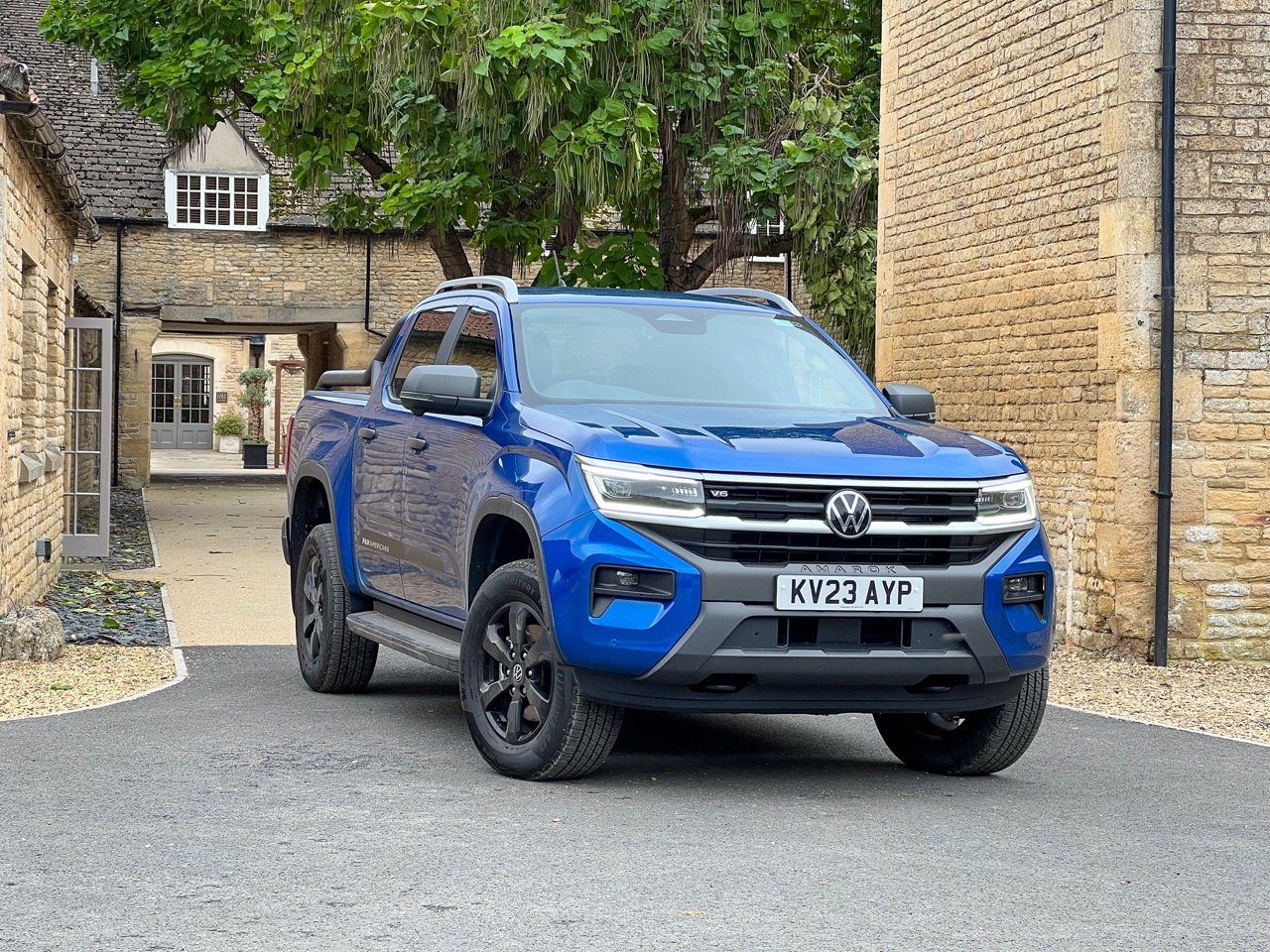Volkswagen Amarok PanAmericana
What is it?
The second generation Amarok has taken its time getting to us, but it’s finally here, with the help of Ford, of course.
You can’t blame them, because of the rising costs of designing, building and testing new vehicles, it’s no surprise that manufacturers collaborate and share the expenditure - it makes perfect financial sense. In the Amarok’s case it shares its underpinnings with the Ford Ranger, obviously, including engines, suspension, transmissions and electronics.
On the outside there are some distinct differences in their designs. The Amarok features squared-off wheelarches and a front end that gives it a familiar Volkswagen family face, while at the rear the Amarok-branded tailgate is flanked by C-shaped tail-lights.
When it comes to the PanAmericana, it’s the highest-spec model that still qualifies as a commercial vehicle and comes exclusively with a BiTurbo, 3.0-litre V6 diesel and the Ford’s 10-speed automatic gearbox, which delivers silky smooth shifts.
On the road
During my week with the PanAmericana I was up and down the M6, M1 and M42 like a yo-yo, cruising anywhere between 50 and 70mph, and after almost 21 hours on the go and 889 miles, it averaged only 24.7mpg.
If you can live with that sort of mileage then you will thoroughly enjoy the PanAmericana, it’s quiet on the road with barely any wind noise. It feels softly sprung, too, I’m not used to been cosseted to this level in a pickup, and yet it doesn’t wallow around corners like a Classic Range Rover. Of course you do get some ‘thumping’ on rocky terrain, but it’s a working pickup that can handle a tonne, so it can be excused.
Then there’s the 237bhp and hefty 600Nm of torque on offer that makes acceleration and towing completely effortless, but as I said, it does come at a cost. If it’s important to you it will reach 62mph from 0 in just 8.8 seconds and carry on to a top speed of 112mph.
The new electro-mechanical power steering set up is light, yet still delivers plenty of feedback to allow you to tackle twisty bits of road with gusto.
Off road
I’ll be honest, after all the road mileage over the week, I didn’t get to test it thoroughly on the rough stuff, bit with selectable four-wheel drive that automatically sets up the truck’s diffs and AWD system to suit the conditions I have no doubt it’ll handle most things - after all, the Ranger did when I took that out, and it’s virtually the same.
I almost forgot, the PanAmericana is the only version of the Amarok that comes with a rear differential lock as standard, though it is available on other specs, but as part of an option pack.
Interior
Inside there’s plenty of leather and upmarket trim, and although the portrait-orientated 12” touchscreen is carried over from the Ranger, it runs Volkswagen’s software and graphics.
Even after spending some time in the Ranger, and a week with the Amarok, I still couldn’t get user to the gear selector, it just feels a bit awkward, but that could just be me.
As you would expect, Volkswagen give you plenty of kit, with wireless phone charging and connectivity, heated and electrically adjustable front seats and a Harman Kardon sound system - which offers a rich, quality sound.
Up front you have as much driver and passenger space as you would find a top-end SUV, and rear passenger have a bit more space than the previous-generation Amarok.
Overall, only two things annoyed me about the Amarok; first was that they still insist on using those hateful heater controls that are accessed by prodding a screen as opposed to easier and safer knobs and dials. To be fair they are straight forward to use, but I still don’t like them.
Secondly, the rear seats do not fold flat, unlike those in the Isuzu D-Max. This was a bit of a nuisance when I wanted to load in my Ecoflow Glacier fridge freezer in the back as I had to use a cardboard tube underneath the Glacier to keep it level.
Pickup stuff
As I mentioned at the beginning, the PanAmericana is the highest-spec model that still qualifies as a commercial vehicle, meaning that it will carry a tonne and tow 3-1/2 tonnes - though not at the same time, unlike the SsangYong Musso. The load bed measures an almost-square 1.62 metres long by 1.58 metres wide, with a width of 1.22 metres between the wheelarches.
Conclusion
Without a doubt the Amarok PanAmericana is a wonderful pickup to spend a lot of time in, but with Ford offering the same ability and a greater model variety, I wonder how the Amarok will cope in the sales race.














